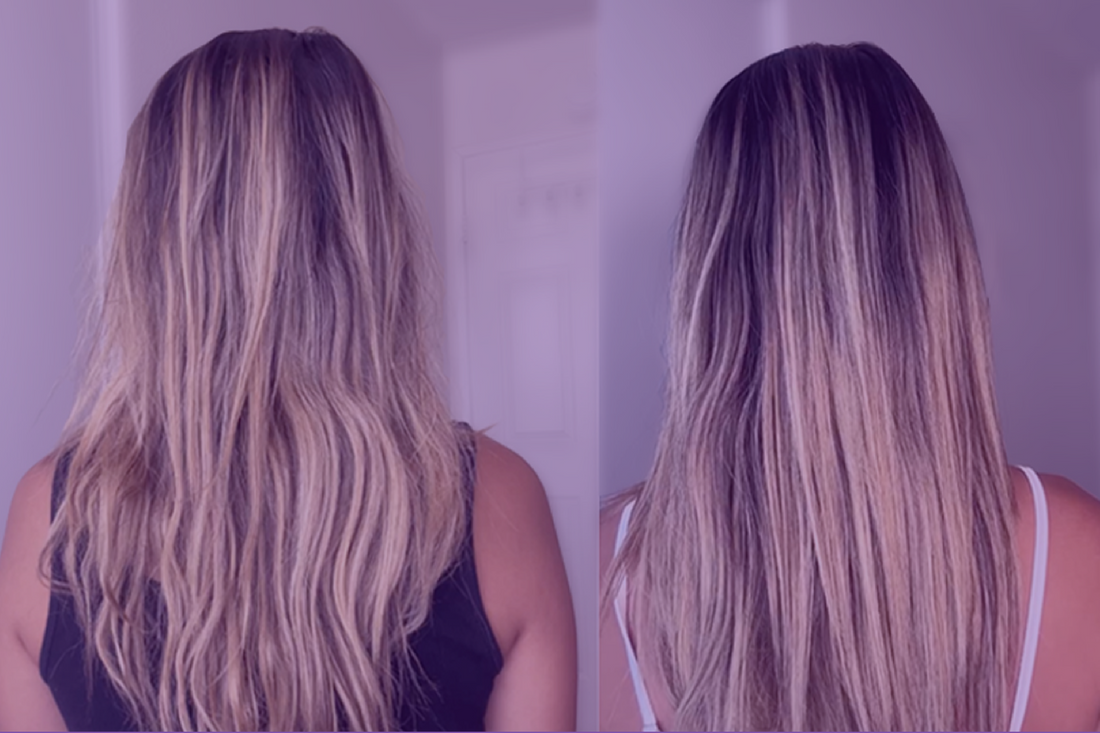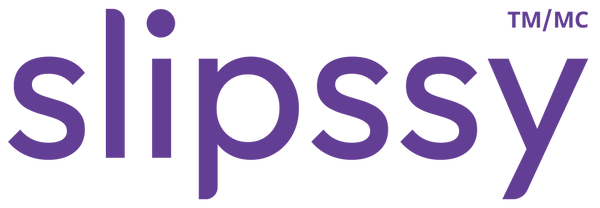
Slipssy’s First-Night Effect: How Reducing Friction Transforms Your Hair Overnight
Share
Introduction
Imagine waking up with hair that's smooth, frizz-free, and ready to go. Sounds like a dream, right? Well, for many Slipssy users, it's a reality. They report less breakage, fewer tangles, and easier styling after just one night.
But how does a pillowcase make such a difference? In this article, we'll delve into the science of friction, explore how it impacts your hair, and reveal why Slipssy's unique design is a game-changer for your hair care routine.
1. The Role of Friction in Hair Damage
What Is Friction?
Think of pushing a heavy box across a rough floor. That resistance you feel is friction – a force that opposes motion between two surfaces in contact. While friction is essential for everyday tasks like walking or gripping objects, it can wreak havoc on your hair, especially when you toss and turn at night.
Classic studies, like "Frictional Effects in Human Hair" (Schwartz & Knowles, 1963), first highlighted how friction from combing and contact with various materials can wear down the hair cuticle.
Why Nighttime Movement Matters
The average person shifts position up to 40 times per night, creating repeated friction between your hair and your pillowcase. Combine that with the weight of your head (around 10 lbs!), and it's no wonder your hair cuticles can suffer. Imagine that weight concentrated on a small area of your hair every time you move – that's a recipe for damage.
The Hair Cuticle's Vulnerability
Your hair cuticles are like overlapping scales that protect the inner hair shaft. Friction can lift, chip, or even break these scales, leaving your hair vulnerable to damage, frizz, and breakage. This is especially true for wavy or curly hair, which has more points of contact and is more prone to friction, as noted in "Friction Dynamics of Straight, Curly, and Wavy Hair" (Bhushan et al., 2014).
Healthy Hair Cuticle

Damaged Hair Cuticle

2. Immediate Effects: The "First Night" Difference
Tangling, Frizz, and Bed Head
When your hair cuticles are roughened by friction, they snag on each other, leading to tangles and knots. Frizz also occurs because the lifted scales scatter light unevenly. And that dreaded bed head? That's from your hair being molded into awkward shapes as you move throughout the night.
One Morning Without Slipssy, then With Slipssy, Real Results From User

Results may vary
Hair Loss on the Pillow
While some hair shedding is normal (50-100 strands per day), excessive friction can pull out more hair than usual. Slipssy users often report finding fewer strands on their pillow in the morning, indicating less stress on the hair shaft.
3. The Science Behind Slipssy's Low-Friction Approach
A Two-Layer Design That Moves With You
Unlike traditional pillowcases with a single, stationary surface, Slipssy features a unique two-layer design. The outer layer moves with your head, while the inner layer stays put. This means the friction occurs between the Slipssy layers, not between your hair and the pillowcase.
Demonstrably Low Coefficient of Friction
Slipssy's Glidetex fabric has an exceptionally low coefficient of friction (μs ≈ 0.21), significantly lower than other pillowcase materials (μs ≈ 1.17). This means less resistance and smoother movement, leading to less hair damage.
Minimizing Static and Tension
Static electricity can also contribute to hair damage, as shown in "Electric Static Charge Generated from the Sliding of Head Scarf Textiles against Skin and Hair" (El-Messiry et al., 2017). Slipssy's two-layer design helps reduce static buildup, further protecting your hair.
4. Step-by-Step Breakdown of Overnight Friction
- Initial Contact: You lie down on Slipssy.
- Movement Initiation: You turn your head.
- Low-Friction Glide: Slipssy's outer layer moves with your head, reducing friction on your hair.
- Reduced Cuticle Stress: Hair cuticles stay smoother and less prone to damage.
- Less Pull, More Comfort: Reduced tugging means less tension on the hair roots and less shedding.
5. How Slipssy Outperforms Traditional and Silk Pillowcases
Cotton and Microfiber
Cotton and microfiber can be rough on hair, leading to more cuticle damage, tangling, and bed head.
Silk Pillowcases
While silk is smoother than cotton, it still creates friction because it's a single layer. Slipssy's two-layer system takes friction reduction to the next level.
Slipssy's Unique Advantage—and the Silk Combo
Slipssy isolates the friction between its two layers, allowing your hair to glide effortlessly. You can even use a silk pillowcase over Slipssy for the ultimate combination of luxury and hair protection.

6. A Closer Look at Hair's Immediate Nightly Stressors
In a single night, your hair endures friction, tangling, frizz, breakage, and bed head. Slipssy tackles the root cause of these issues – mechanical friction – to help you wake up with healthier, more manageable hair.
7. The Immediate Payoff: Waking Up to Smoother, Healthier-Looking Hair
Tangle-Free Styling and Longer-Lasting Hairdos
Slipssy users report easier detangling, less breakage during styling, and longer-lasting hairstyles.

Decreased Hair Shedding on the Pillow
Wake up to fewer strands on your pillow, thanks to Slipssy's gentle friction reduction.
Fewer Flyaways and Frizz
Reduced friction and static mean smoother, shinier hair with fewer flyaways.
Quicker Morning Routine
Spend less time fighting with your hair and more time enjoying your day.
Real-World Example
We often hear from African American customers who straighten their hair at night so that in the morning they only need a quick touch-up. Below is an image showing a typical “before Slipssy” and “after Slipssy” comparison. On the left, you see the hair with pronounced bed head in the morning. On the right, the hair is nearly as sleek as it was before bedtime—demonstrating just how well Slipssy preserves a hairstyle overnight.
One Morning Without Slipssy, then With Slipssy, Real Results From Us
Results may vary
8. Why the Science Backs Up Slipssy's Claims
It’s one thing to say a product reduces friction and improves hair manageability; it’s another to see it through the lens of peer-reviewed studies. While Slipssy’s pipllow cover system with Glidetex fabric is a proprietary innovation, the concepts it relies on—reduced friction, minimal static, and the protective effect of smoother fabrics—are well-documented:
-
Frictional Damage to Hair
- Demonstrated in Schwartz & Knowles (1963) and Bhushan et al. (2014).
- Highlights the importance of surface smoothness and reduced cuticle disturbance.
-
Static Charge Accumulation
- Covered by El-Messiry et al. (2017), linking static to increased friction and further cuticle damage, particularly in polyester-based textiles.
-
Higher Coefficient of Friction in Single-Layer Fabrics
- Most studies on pillowcases point out how a single surface, no matter how smooth (e.g., silk vs. cotton), still presents friction to hair each time you move.
Slipssy’s two-layer approach and low friction coefficient (μs ≈ 0.21) represent a strategic application of these findings, aligning well with established trichological research.
9. Frequently Asked Questions
-
Is Slipssy only for curly or textured hair?
Not at all. While curly or wavy hair can be more susceptible to friction damage, straight hair also benefits from reduced friction, fewer tangles, and less static. -
Will Slipssy keep me cool at night?
Slipssy’s Glidetex fabric is designed with breathability in mind, but personal comfort can vary. Many users report that it feels cool against the skin due to its smooth surface. -
Can I use my regular or silk pillowcase over Slipssy?
Yes. Slipssy was specifically engineered to work underneath the pillowcase of your choice, including silk pillowcases. The two Glidetex layers do the heavy lifting by isolating friction, so you can enjoy the luxurious feel of silk while still reaping Slipssy’s tension-release benefits. -
How soon will I see results?
Many customers report immediate results, such as less bed head and reduced hair shedding on the pillow, literally after the first night. Styling also tends to last longer, so you may need only minimal touch-ups in the morning.
10. Conclusion
Slipssy's innovative two-layer system offers a science-backed solution to the common frustrations of hair damage, tangles, and bed head. By minimizing friction and static, Slipssy helps you wake up to smoother, healthier-looking hair, every day.
Ready to experience the Slipssy difference? Shop now and transform your hair care routine.
References
- Schwartz, A. M., & Knowles, D. (1963). Frictional Effects in Human Hair. Journal of the Society of Cosmetic Chemists, 14(2), 67–73.
- Bhushan, B., Trinh, L., & Chen, N. (2014). Friction Dynamics of Straight, Curly, and Wavy Hair. Colloids and Surfaces B: Biointerfaces, 123, 401–413.
- El-Messiry, M., Shaker, M., & Gouda, M. (2017). Electric Static Charge Generated from the Sliding of Head Scarf Textiles against Skin and Hair. The Journal of The Textile Institute, 108(4), 578–585.
